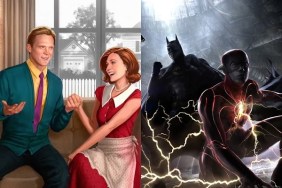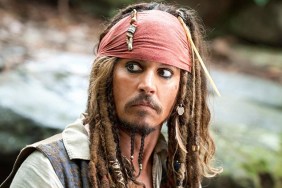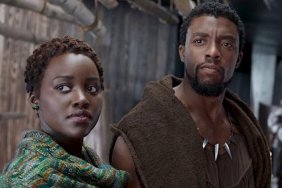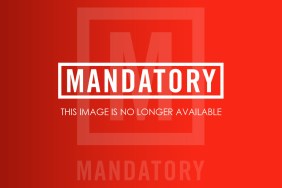It wasn’t until 2009 that the Disney Corp. bought most of the characters in the Marvel canon, taking charge of a motion picture franchise that is obscenely profitable to this very day. The Marvel Cinematic Universe just saw the release of its 15th installment (Guardians of the Galaxy, Vol. 2), and the 16th and 17th installments (Spider-Man: Homecoming and Thor: Ragnarok) are due out later this year. By the time the 17th film is released, the entire series will have likely made over $3 billion worldwide (still shy of the $4 billion Disney paid for the characters). Installments 18 through 23 have already been given release dates. This machine will continue steamrolling ad infinitum, it seems.
But Disney has actually had a pretty dismal track record when it comes to superhero films, the MCU notwithstanding. Indeed, many of Disney-produced films that dared to take a more masculine, aimed-at-young-boys tack in their marketing and tone have been greeted with minor success, indifference, or even scorn. The few exceptions, like Aladdin and Hercules, only call attention to how unusual they are. Disney has a lock on an audience of young girls and, apart from their purchased IPs (Marvel, Lucasfilm), their own Disney Princess imprint is their most successful.
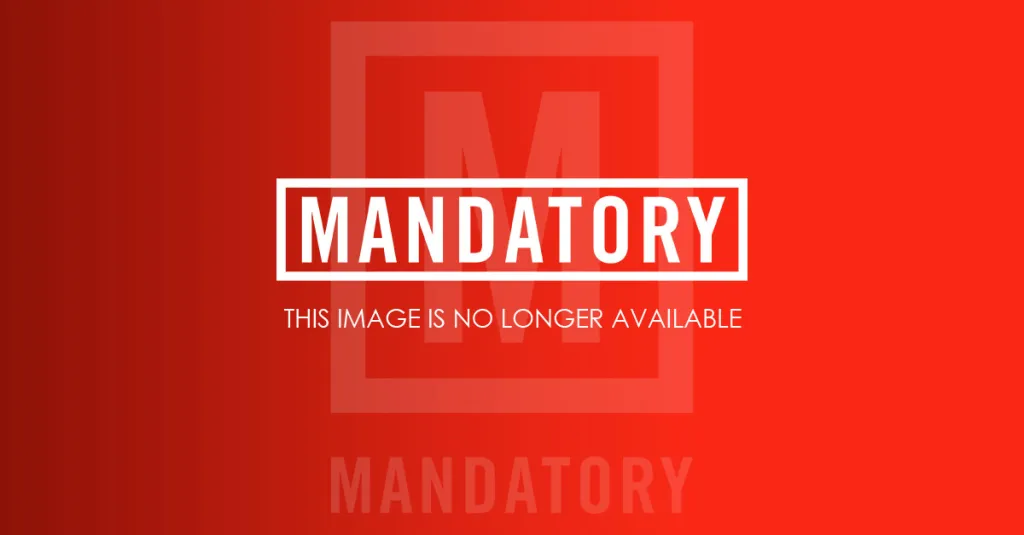
Disney
Also: The 62 Marvel Superhero Movies: Ranked From Worst to Best
Looking over Disney’s output throughout the late 1990s, one can see them attempting to reach out to a broader audience that included both boys and girls. And they thought they knew the pattern: Make an animated film with a male lead character, perhaps include a lot of tech and sci-fi/superhero elements, and, perhaps most importantly, make the film a broad slapstick comedy.
As such, audiences were treated to a long series of not-very-good, not-well-remembered comedy sci-fi films from the most powerful animation studio in the world. How many of you truly love Atlantis: The Lost Empire? Who even bothered to see Treasure Planet? And then there was the one-two-three punch of CGI misfires in Chicken Little, Meet the Robinsons, and the superhero dog film Bolt. Oh yes, and I forgot Brother Bear. Just like everyone.
Then, when they finally did have a pattern in place – pulp heroes like pirates, interplanetary warriors, and cowboys, they whizzed them down their legs. I mean, did you see The Lone Ranger? Or John Carter? No? Neither did most people.
Why couldn’t Disney crack the little boy market? They knew what little boys liked, but they clearly didn’t really have a clear eye as to how to go about constructing something they would actually consume.

Disney
Disney’s dim history with superheroes, one might find, goes all the way back to 1981 with the release of Condorman, one of Disney’s most embarrassing films. In it, a comic book author, to test the verisimilitude of his creations, makes a condor suit that can actually fly him around. He eventually becomes his own creation, the eponymous Condorman, to stop rogue Russian agents. Condorman was openly panned at the time, and only has a cult audience of ironic appreciators to this day.
In 1985, Disney tried to make a heroic magical fantasy epic based on Lloyd Alexander’s famous Chronicles of Prydian. The film was called The Black Cauldron, and it features some of the weirdest and most ambitious imagery of any Disney animated feature. It’s also clunky, badly written, not very well acted, and features a character named Gurgi, a dog-faced creature that is one of the most obnoxious animated characters ever conceived. The Black Cauldron was such an enormous flop that there was talk of shuttering Disney animation altogether. Indeed, it would take the studio four years to get back on their feet.

Disney
More successful was The Rocketeer, released by the Disney in 1991. The Rocketeer is a wholly enjoyable and incredibly charismatic film that holds up remarkably well to this day. In it, a farmboy from the sticks finds an experimental rocket pack that he uses to fight off rogue Nazis who would use the pack to take over America. The Rocketeer was made by Joe Johnston ,who would go on to make Captain America: The First Avenger, a film that feels like a pale imitation of The Rocketeer in many ways. Many love The Rocketeer but it failed to ignite the box office in 1991, in part – at least arguably – because the Disney imprint meant so little to audiences seeking action.
Disney would again attempt to create their own animated superhero with Bolt, which was released in 2008. Bolt is about a performing TV star dog that has been duped into thinking he has superpowers. When he goes out into the world, having to perform actual acts of heroism, comedy ensues. In the interim, they coasted on the properties of other studios. Disney did not acquire Pixar until 2006, so the success of 2004’s The Incredibles was hardly their doing. Ditto any success they had from films by Studio Ghibli.

Disney
In the early 2000s, though, Disney had an unexpectedly large hit with Pirates of the Caribbean: The Curse of the Black Pearl, based on one of their rides at Disneyland. Having thought to have discovered a new secret, Disney put several new films into production that seemed to tap into the same vein as pirates: Were pulp novel heroes and historical heroes the “Next Big Thing”? That’s what the successful Pirates sequels seemed to imply.
But as it turns out, the answer was no. Both 2012’s John Carter (based on the novels by Edgar Rice Burroughs) and 2013’s The Lone Ranger (based on radio serials from the 1930s) were enormous misfires for the studio, each losing hundreds of millions of dollars. Indeed, I think John Carter may count as one of the studio’s biggest bombs, costing almost as much money as The Avengers made that same year.
Even though Marvel was already succeeding, Disney was bleeding. They finally thought they could capture the crash-bang of their own comics industry parallels, but simply didn’t know what to do. They seemed to have learned the wrong lessons from Pirates: make the special effects ugly, and make the story too complicated, and supposedly people would come. But people, as the saying goes, stayed away in droves.

Walt Disney
In 2009, Disney threw their hands up and simply bought Marvel characters wholesale, and started essentially printing money with big-budget renditions of established characters like The Hulk and Captain America.
Why were the Marvel films successful, and the Disney superhero films unsuccessful? The answer is simple, and it’s been repeated by nerd pundits repeatedly and often. When making the Marvel films, the Disney-hired filmmakers were instructed to “take the characters seriously.” Disney was always more comfortable making family-friendly comedies than they were action spectaculars, so they weren’t really well-prepared when it came to something as action-oriented as a superhero. With the Marvel characters, they essentially bought a template to follow, and constructed a universe. It changed the way studios make blockbusters.
Previously, Disney tried to riff on the superhero. Give a new cinematic interpretation. Interpret. And there was always a slight air of satire lurking underneath, hence the air of comedy in films like Condorman. Even something like The Rocketeer is undercut by a sense of nostalgia; as though this character couldn’t exist in the modern, real world. Disney didn’t just scoop up hundreds of characters when they bought Marvel. They also bought an ethos. And it was an ethos they seemingly weren’t capable of achieving on their own. Then they bought Star Wars, and now they’re doing better than okay with a little boy audience.

Disney
But notice that the Disney-produced animated output of late has been increasingly girly. There have few attempts at superheroics and slapstick (I love the gag-a-minute Wreck-It Ralph), but for the most part it’s been films like Tangled, Frozen, Zootopia, Moana… films to feature female protagonists, and which aren’t quite as action-oriented as your average Marvel flick. They have fallen back on what they know they can do, and left the explodey stuff to others.
In so doing, Disney has learned a lesson that they are likely going to continue: Poach property. Jump claims. Buy up what you can’t do yourself, then pour money into it. The success of Marvel and Star Wars is proof enough.
The Top 25 Best Disney Villain Songs:
Top Image: Disney
Witney Seibold is a longtime contributor to the CraveOnline Film Channel, and the co-host of The B-Movies Podcast and the TV podcast Canceled Too Soon. He also contributes to Legion of Leia, Nerdist, and Blumhouse. You can follow him on “The Twitter” at @WitneySeibold, where he is slowly losing his mind.
The Top 25 Best Disney Villain Songs
-
25. The World’s Greatest Criminal Mind
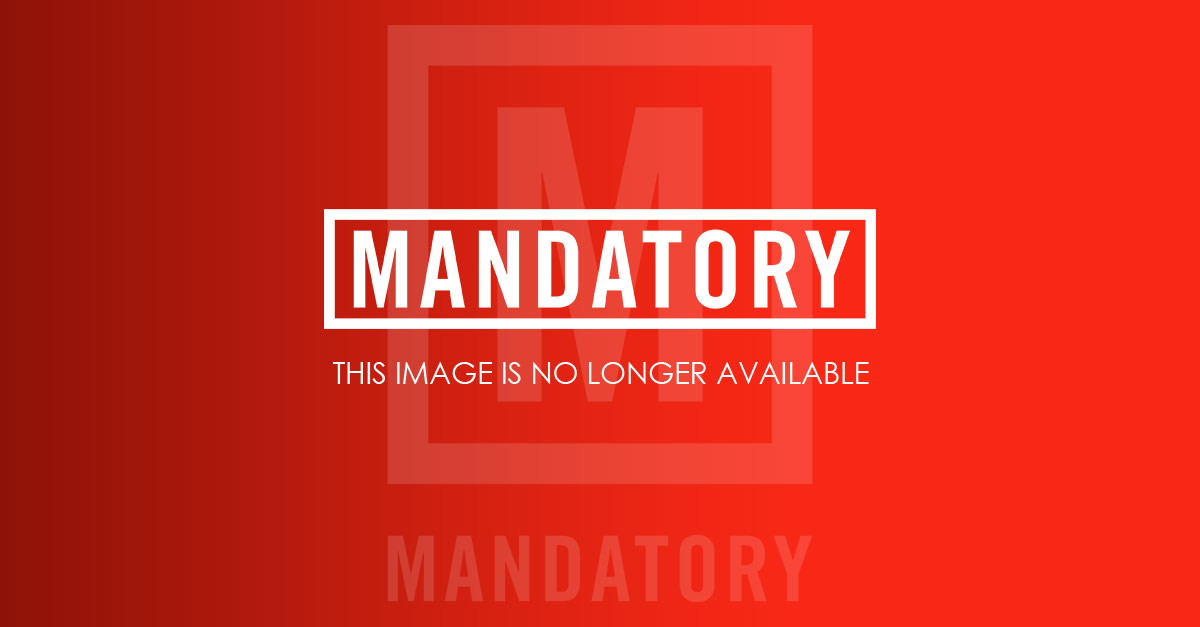
The villainous Rattigan, a mouse version of Sherlock Holmes' arch-nemesis Moriarty, has some bragging to do. The villain of The Great Mouse Detective has a somewhat forgettable musical number but Vincent Price seems to be cherishing every note of it.
Photo: Disney
-
24. I'm Mean

The off-kilter, slightly off-key songs of the underrated Popeye include a funny but understated villain number for Brutus (better known as "Bluto" in the cartoons), who wants you to know that he's mean. You know what he means...
Photo: Disney
-
23. The Siamese Cat Song

Catchy but guilty of distasteful racial stereotyping, the villain song from Lady and the Tramp may be historically noteworthy but nowadays it's pretty darned difficult to enjoy.
Photo: Disney
-
22. The Marvelous Mad Madam Mim

A zesty villain number from the energetic Mad Madam Mim, the witch who torments a young Arthur in The Sword in the Stone. It's a very fun tune but it just doesn't have much of an impact compared to most of these other villain songs.
Photo: Disney
-
21. Every Little Piece

The underrated original version of Pete's Dragon features two unforgettably nasty villain songs. The first on our list is a disturbing little number from two snake oil salesman who fantasize about cutting pieces off of the title character. Yikes.
Photo: Disney
-
20. Heffalumps and Woozles

"Heffalumps" and "woozles" probably don't exist but that doesn't stop Winnie the Pooh from having a vivid, trippy nightmare about them stealing his honey in this freaky-deaky song from The Many Adventures of Winnie the Pooh.
Photo: Disney
-
19. I'm Number One

Muppets Most Wanted was a mostly forgettable movie, but the villain had a couple solid songs in him. In "I'm Number One" he reminds his henchman Ricky Gervais who's on top by literally dancing on the actor's head.
Photo: Disney
-
18. Les Poissons

It should be a comic relief number but in a world where most of our heroes are at least part fish, a ditty about a chef who lives for cooking the supporting cast comes across as impressively ghoulish.
Photo: Disney
-
17. The Happiest Home in These Hills

The hero of the original Pete's Dragon has been purchased by a despicable family who, in their big number, try to convince him to come home but can't resist yelling about how they're going to saw him in half and eat him for dessert. It's a weird movie but these villain songs stick out in the best possible way.
Photo: Disney
-
16. Shiny

Jemaine Clement plays a crab obsessed with sparkly baubles in Moana, and he has a show-stopping number explaining the importance of all that flare. "Shiny" is a great song but it doesn't fit very well with the rest of the film, digressing from both the plot and overall musical style.
Photo: Disney
-
15. Let's Talk About Me

Villain songs don't exist in a vacuum. If you were to listen to "Let's Talk About Me" without seeing the rest of The Muppets it might just seem like a lark. But the way this song plops into the film with almost no provocation whatsoever, combined with its brazen self-congratulatory weirdness, and the fact that Oscar-winner Chris Cooper is the one rapping its lyrics, make it a classic gag song.
Photo: Disney
-
14. Friends on the Other Side

The toe-tapping villain song from The Princess and the Frog might come across like a simple knockoff of Ursuala's number from The Little Mermaid, but this particular offer to make a deal with the devil gets bonus points for its glorious animation, styled after blacklight paintings and voodoo symbolism.
Photo: Disney
-
13. I'll Get You What You Want (Cockatoo in Malibu)

The second villain song from Muppets Most Wanted is an infectious ditty, in which the evil Constantine - who has been unconvincingly impersonating Kermit the Frog - appeals to Miss Piggy's vanity by offering her literally everything she wants. Catchy and insidious and, when the "thingy-thing" shows up, wonderfully absurd.
Photo: Disney
-
12. Mother Knows Best

One of Disney's most subtly despicable villain songs finds a kidnapper, Gothel, manipulating her "daughter" using subtle psychological abuse. The music makes it sound loving, but that only makes the cruelty of the lyrics all the more disturbing.
Photo: Disney
-
11. Sarah's Theme (Come Little Childen)

Disney's cult favorite Hocus Pocus may not be a musical (and Bette Midler's cover of "I Put a Spell On You" doesn't count), but this creepy lullaby sung by Sarah Jessica Parker - designed to lure children to their demise - has rightly become iconic to a generation. It's a silly film, but it's an eerie song.
Photo: Disney
-
10. Trust in Me (The Python's Song)

Another seductive lullaby, this time from the villainous snake Kaa, who has hypnotized the man-cub Mowgli into following his every malicious word. The clever use of Kaa's malleable body and the calming, friendly delivery by the great Sterling Halloway help make it a classic.
Photo: Disney
-
9. The Mob Song

Most villain songs are sung by or about individual villains, but the disturbingly rousing "Mob Song" from Beauty and the Beast casts all of society - manipulated by a fear-monger via great publicity - as the real monsters. It's a suspenseful number that perfectly captures the message of one of Disney's best films.
Photo: Disney
-
8. Oogie Boogie's Song

Lots of villains in musicals get show-stopping numbers about their own personal greatness, but few seem to relish their moment in the spotlight more Than the Oogie-Boogie Man in The Nightmare Before Christmas. He's not just singing, he's practically headlining in Vegas. He gets points for presentation.
Photo: Disney
-
7. Poor Unfortunate Souls

Of all the Disney songs by villains who want to lure a hero to the dark side, "Poor Unfortunate Souls" is easily the most convincing. Ursula has a devil's bargain to strike with The Little Mermaid, and she we'd make that deal too, thanks to a song that feigns pity for the hero's plight and a spectacular animated and vocal performance.
Photo: Disney
-
6. The Headless Horseman

None other than the great Bing Crosby sings this spectacular campfire song from The Adventures of Ichabod and Mr. Toad, in which Brom Bones warns a timid schoolteacher about the supernatural villain that haunts the woods. "The Headless Horseman" is an iconic example of Disney showmanship.
Photo: Disney
-
5. Kidnap the Sandy Claws

Few other Disney songs can claim to be as mean-spirited and nightmarish as "Kidnap the Sandy Claws," a song by the Nightmare Before Christmas villain's henchmen, all about their evil plans to abduct a beloved childhood hero and torture and murder and eat him. Jeepers.
Photo: Disney
-
4. Cruella De Vil

One of Disney's most iconic villains is such a detestable character that the heroes of 101 Dalmations have written a song about how much they hate her. They even don't break into spontaneous song. Roger is a songwriter who actively uses his skills to compose a ditty about how much she sucks. The damnedest thing is he was underselling his point. Cruella De Vil is so wicked she actually seems to deserve this treatment. Maybe she should be honored... after all, "Cruella De Vil" is one of the catchiest villain songs ever written.
Photo: Disney
-
3. Gaston

By the time the villagers sing a rousing barroom chanty to the greatness of town hero Gaston, nobody has any idea he's a villain yet... including Gaston. That's what makes this Beauty and the Beast centerpiece so unnerving. It demonstrates just how seductive shallowness can be, and how inspired the masses sometimes are by charismatic blowhards. Brilliant and - not for nothing - endlessly hummable.
Photo: Disney
-
2. Be Prepared

Few Disney villains have the same breadth of vision as Scar, the usurper of the throne in The Lion King, who murders his own brother and - in the behind-the-scenes scheming song "Be Prepared" - organizes an army of hyenas to usher in a new era of outright fascism. The music is great, Jeremy Irons sells the cocksure villainy, and the imagery is particularly haunting, inspired by Leni Riefenstahl's horrifying pro-Nazi propaganda film The Triumph of the Will.
Photo: Disney
-
1. Hellfire

Judge Frollo is on a completely different level of Disney villainy, a hypocritical religious leader who oppresses the disfigured and - in a musical number so incredibly subversive it's hard to believe Disney even tried selling to audiences (let alone succeeded) - decides that if he can't have sex with the woman who fills his heart with lust, he will murder her. "Hellfire" is operatic in the extreme, as big a statement as Disney has ever made, as powerful a descent into the concept of Hell as an animated family movie has ever dared. And when placed in contrast with the song that immediately precedes it, the earnest and heavenly "Heaven's Light", this number comes across as especially perverse. Villain songs don't get much more desperate and villainous.
Photo: Disney





